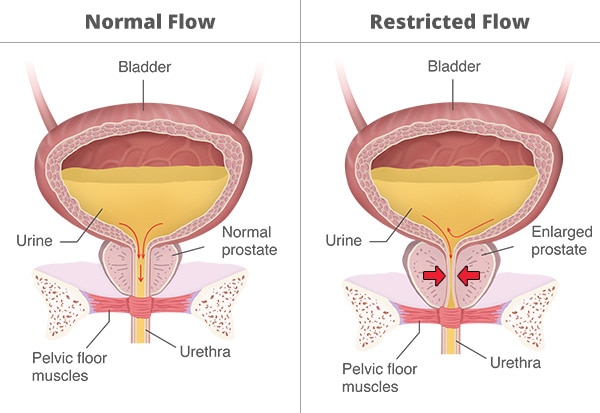Definition & Facts of Urinary Retention
In this section:
- What is urinary retention?
- How common is urinary retention?
- Who is more likely to develop urinary retention?
- What are the complications of urinary retention?
What is urinary retention?
Urinary retention is a condition in which you are unable to empty all the urine from your bladder. Urinary retention is not a disease, but a condition that may be related to other health problems, such as prostate problems in men or a cystocele in women. Urinary retention can be acute—a sudden inability to urinate at all, or chronic—a gradual inability to empty the bladder.
Acute urinary retention
Acute urinary retention happens suddenly and lasts only a short time. People with acute urinary retention are unable to urinate even though they have a full bladder.
Acute urinary retention can cause severe pain and be life threatening. If you are suddenly unable to urinate, it’s important that you seek emergency medical treatment right away.
Chronic urinary retention
Chronic urinary retention develops over time. People with chronic urinary retention can urinate but cannot completely empty the urine from their bladders. Many people with chronic urinary retention do not know they have the condition because they may not experience any symptoms.

How common is urinary retention?
Acute urinary retention is common in older men, and the likelihood of experiencing acute urinary retention increases with age. Over a five-year period, approximately 1 in 10 men over the age of 70 and almost one in three men in their 80s will develop acute urinary retention.1
Acute urinary retention is much less common in women. Each year, about 3 in 100,000 women develop acute urinary retention.1 Acute urinary retention in children is rare.
Researchers aren’t sure how common chronic urinary retention is. However, researchers do know that chronic urinary retention affects older men more than any other group.
Who is more likely to develop urinary retention?
Urinary retention affects both men and women, but it occurs more often in men, especially as they get older. Men who have benign prostatic hyperplasia (BPH)—a condition in which the prostate gland is enlarged—are more likely to develop urinary retention. As the prostate enlarges, it pushes against the urethra, blocking the flow of urine out of the bladder. BPH is a common prostate problem for men older than age 50.
What are the complications of urinary retention?
People who have urinary retention may have complications, including
- Urinary tract infection. When your urinary tract is emptying completely, bacteria that normally enter your urinary tract are flushed out when you urinate. With urinary retention, your urine doesn’t completely flow out, which allows the normally harmless bacteria a chance to multiply and infect your urinary tract. Serious problems can occur if the infection spreads to your kidneys.
- Bladder damage. If urinary retention is not treated, your bladder may become stretched too far or for long periods. When stretched too far or for too long, the muscles in your bladder may become damaged and no longer work correctly.
- Kidney damage. Your urinary tract is designed to have the urine flow from the kidneys, through the ureters, to the bladder, and out the urethra. When you have urinary retention, you aren’t able to empty the urine from your bladder and the urine may back up into your kidneys. Your kidneys can become so full of urine that they swell and press on nearby organs. This pressure can damage your kidneys and in some cases may lead to chronic kidney disease and kidney failure.
- Urinary incontinence. When your bladder does not fully empty, it can lead to you leaking urine, called overflow incontinence.
Working with a health care professional to prevent and treat these complications is important for both the health of your urinary tract and your overall health.
Reference
This content is provided as a service of the National Institute of Diabetes and Digestive and Kidney Diseases
(NIDDK), part of the National Institutes of Health. NIDDK translates and disseminates research findings to increase knowledge and understanding about health and disease among patients, health professionals, and the public. Content produced by NIDDK is carefully reviewed by NIDDK scientists and other experts.
